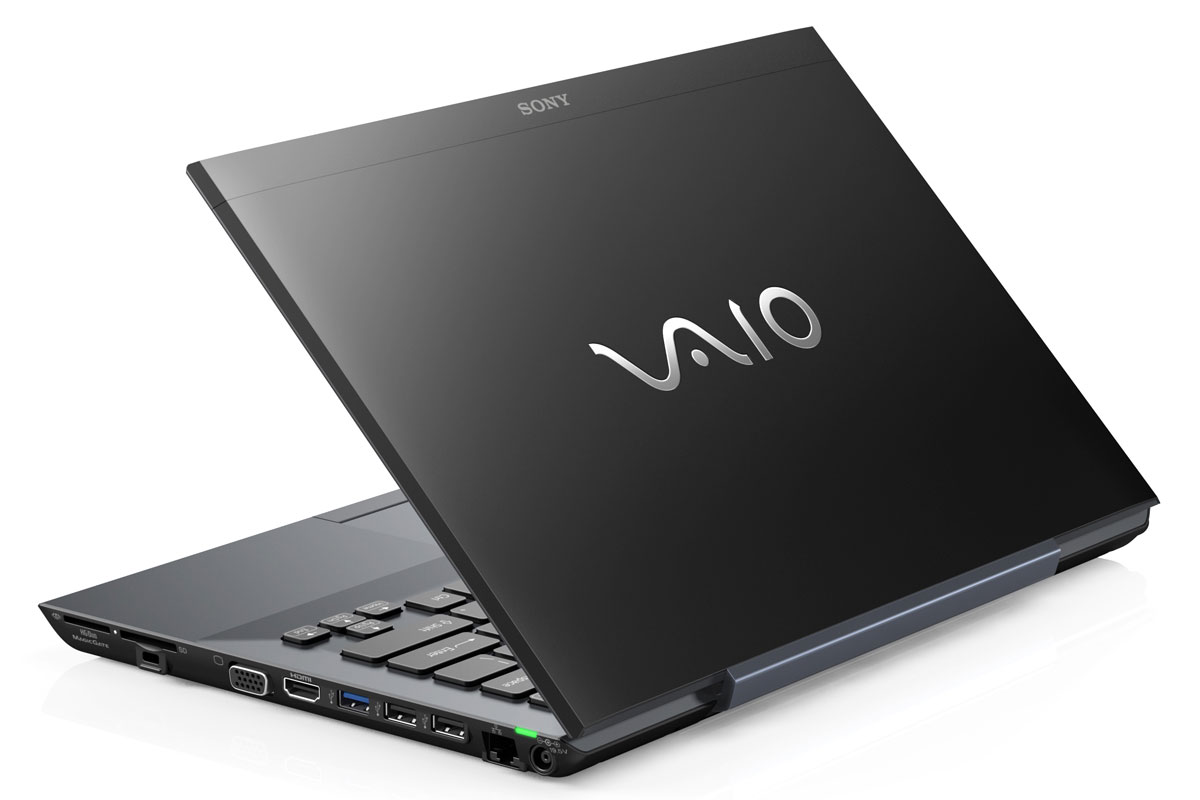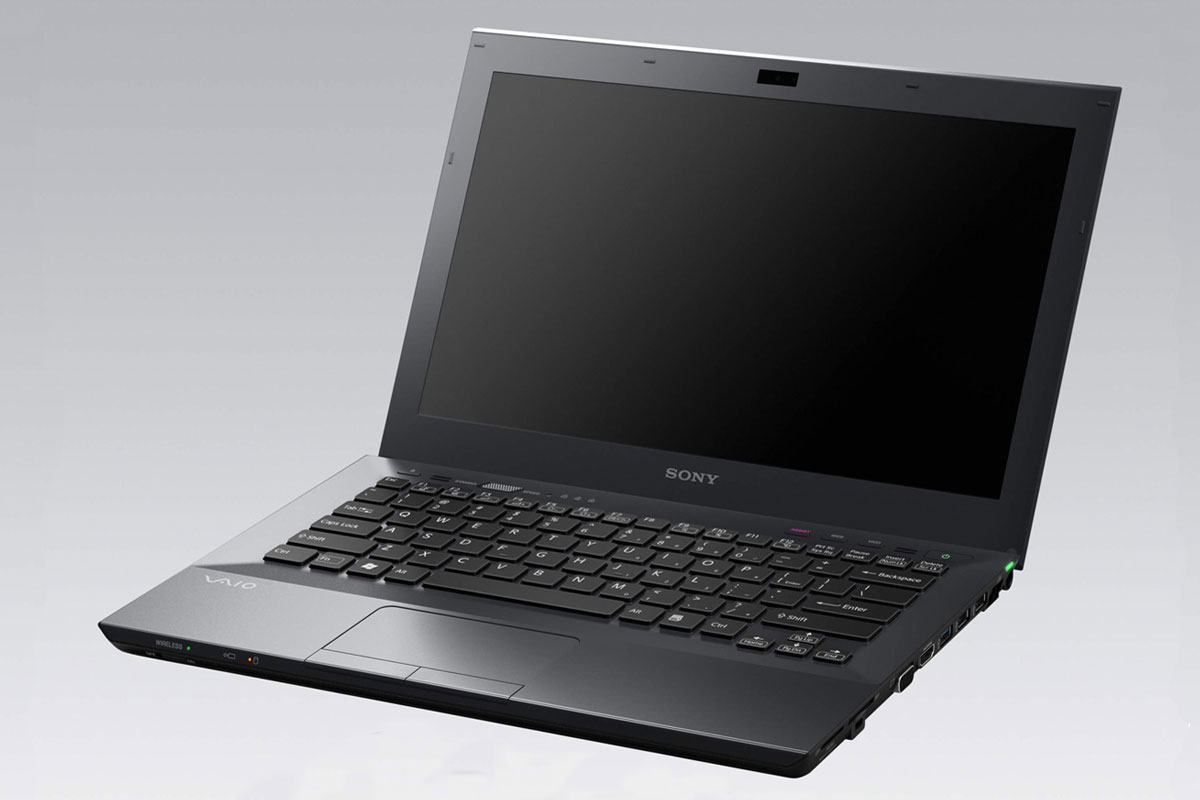Sony Vaio SB1V9E review
Sony's slender new Sandy Bridge ultraportable laptop is finally available, packing a powerful processor in a slender design. But can you really have your cake and eat it too? Alan Lu finds out.
The Sony Vaio SB1V9E is a lightweight, well-specified ultraportable laptop with a powerful processor, plenty of useful ports and dual graphics. Its seven and a half hour battery life isn't nearly as impressive as the pricier 13in MacBook Air which lasted 13 hour and 40 minutes though. This isn't an entirely fair comparison as the MacBook Air was designed to be as thin and light as possible with a long lasting battery at the expense of powerful specifications. The Vaio SB1V9E, on the other hand, was designed to fit as powerful a computer as possible into a slender build. A more comparable model would the 13in MacBook Pro which is 300g heavier, but its battery can last as long as ten hours.If you must have an ultraportable that's also fast with lots of storage then the SB1V9E is a fine choice, but frequent travellers should consider Apple's models first.

The right-hand side ports and lid of the Sony Vaio SB1

The Sony Vaio SB1

The keyboard on a silver Sony Vaio SB1
Despite the promise of Intel's new Sandy Bridge processors, technology manufacturers have been slow to release new models equipped with them. Sony has finally released its first Sandy Bridge ultraportable laptop, the Vaio SB1V9E. The name might not roll off the tongue, but it's an impressive laptop in many ways.
The Vaio SB1V9E weighs just 1.7kg even though it has a built-in DVD writer. The magnesium and aluminium black chassis isn't especially eye-catching, but it still looks classy in an understated way. It doesn't feel quite as rigid as other laptops we've seen, flexing under pressure more than we'd like, but it still feels well made.
Typing long documents is accurate and fast thanks to the large, responsive and comfortable keyboard. The keys are backlit for working in darkened rooms, such as airplane cabins and lecture halls. The touchpad is large and generally feels accurate, although the tracking speed felt a little off even at the fastest setting it still felt a little slow. The pad supports multitouch gestures, although they're frustrating to use as there's often a delay in Windows responding to the finger swipes. The buttons are a bit stiffer than we'd like, but work well enough.
Unlike other ultraportable laptops which use ultra low voltage processors, which are energy efficient but comparatively slow, the SB1C5E uses a full-speed Core i5 mobile processor. Paired with 4GB of RAM it sped through our benchmarks, managing a high score of 53 in our new cross-platform applications benchmarks (designed by our sister site Expert Reviews). It's noticeably quicker than older Core 2 Duo-based laptops, but the difference isn't as pronounced when compared to previous generation Core i5 laptops.
The underside of the laptop didn't become uncomfortably warm when it was churning through our demanding benchmarks, but the cooling fan was irritatingly loud. It's especially annoying since the fan kicked in even during seemingly simple, innocuous tasks such as web browsing.
Sign up today and you will receive a free copy of our Future Focus 2025 report - the leading guidance on AI, cybersecurity and other IT challenges as per 700+ senior executives
-
 ‘1 engineer, 1 month, 1 million lines of code’: Microsoft wants to replace C and C++ code with Rust by 2030 – but a senior engineer insists the company has no plans on using AI to rewrite Windows source code
‘1 engineer, 1 month, 1 million lines of code’: Microsoft wants to replace C and C++ code with Rust by 2030 – but a senior engineer insists the company has no plans on using AI to rewrite Windows source codeNews Windows won’t be rewritten in Rust using AI, according to a senior Microsoft engineer, but the company still has bold plans for embracing the popular programming language
By Ross Kelly Published
-
 Google drops $4.75bn on data center and energy firm Intersect
Google drops $4.75bn on data center and energy firm IntersectNews The investment marks the latest move from Google to boost its infrastructure sustainability credentials
By Nicole Kobie Published
-
 OpenAI says prompt injection attacks are a serious threat for AI browsers – and it’s a problem that’s ‘unlikely to ever be fully solved'
OpenAI says prompt injection attacks are a serious threat for AI browsers – and it’s a problem that’s ‘unlikely to ever be fully solved'News OpenAI details efforts to protect ChatGPT Atlas against prompt injection attacks
By Nicole Kobie Published